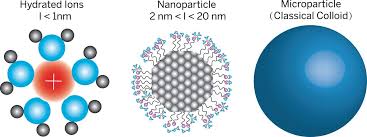Semiconductor (Si), (TA) and (CU) Semiconductor Modes of Function and Applications Based on Nano-Micro PhD
Researcher and author:
Engineer Afshin Rashid
Note: Basically, semiconductor-metal nano-connections (Si, TA and CU) are essential components of all nano-electronic components. The nature and behavior of electrical nano-connections depend on the surface cleanup and interactions between the metal-semiconductor interface.
After the invention of the transistor, the concept and importance of integrated circuits became clear. Subsequently, the great success of assembling a large number of small components and electronic components on the substrate led to a major transformation in the practical fabrication of integrated circuits. In nanotechnology, specific parameters and systems must be used to perform such processes. For example, in the metal process, the use of copper metal instead of the common aluminum metal for interconnections between different practical parts is inevitable. However, the rapid penetration of Cu atoms under Si in the heat treatment results in the formation of a copper silicon layer and ultimately destroys the electronic fragment. To solve this problem, a middle layer of late materials such as Ta, w or Mo is usually used as a barrier to improve the thermal stability of the Cu-Ta-Si layer.
Design and characterization of multilayer systems
Characterization of Si / Ta / Cu Multilayer Systems on the Impact of Negative Bias Voltage on Improving the Electrical and Structural Properties of the Ta Spattering Layer Inhibitor in Si / Ta System; Thin layers required in the integrated circuits are only possible in environments defined by precise layering methods such as molecular beam labeling (MBE) and metal organic chemical vapor deposition (MOCVD.
In nanotechnology, microelectronics, Si substrate processes, including combustion, are carried out by plasma and ion beam technology. Such integrated circuits with their unique features at the nanometer scale have a variety of uses for mesoscopic systems.
Some of these applications include:
Manufacturing tunneling quantum dots and systems in resonant diodes like (Si and Gi) Designing and manufacturing laser such as (InGap) amplifiers; Designing and fabricating micro sensors and micron machines for specific applications due to the importance of nano-micro electronics technology And the growth of electronic (general-military) nanosystems is critical to understanding the critical elements that make up such structures.




